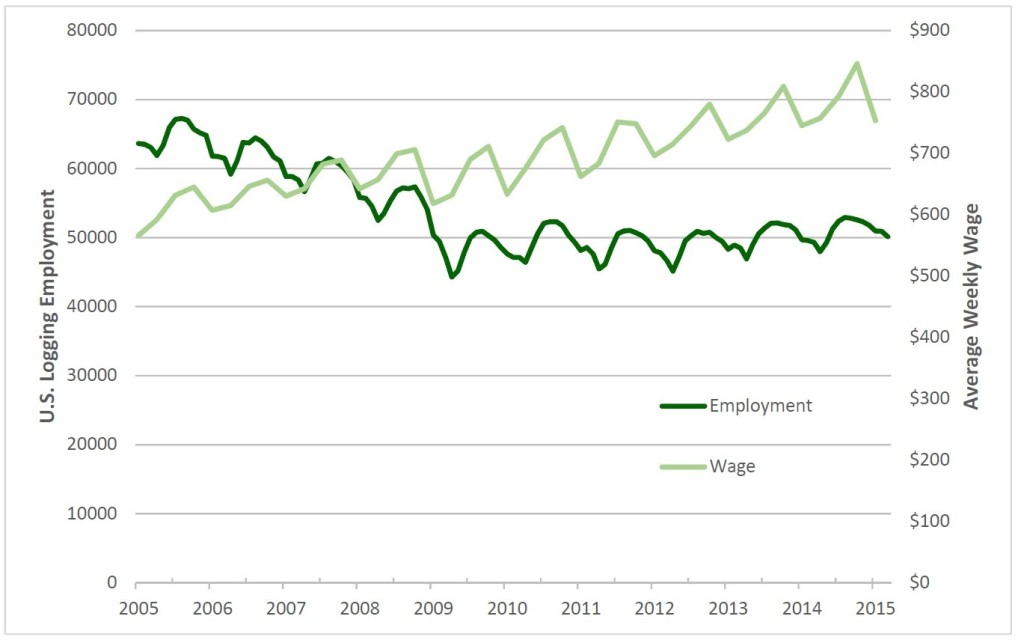This post includes an excerpt from the newly updated Q4 2015 “Forest Operations” section of the Forisk Reseach Quarterly (FRQ).
Starting in Q4 2015, Forisk will report regional metrics of interest related to logging and transportation. This quarter, we present five-year trends of logging wages and employment by region. In the five years from 2005 to 2010, logging employment in the U.S. declined 25% (Figure 1). This drop raised concerns about the ability of the logging industry to meet the needs of a rebounding forest industry. Short-term changes in wages and employment indicate the trajectory of the logging industry as wood demand strengthens. While not a perfect measure of logging capacity, we can use them in tandem with other measures to assess the health of the logging industry in a given market.
Figure 1. U.S. logging employment and wages, 2005-2015. Source: Bureau of Labor Statistics
Forisk separates the U.S. into three regions – North, South and West – for evaluating timber markets and forest industry activities. Operationally, wide variability exists within these regions, so we consider them at the sub-regional level. In the West, we examine the Pacific Northwest, consisting of western Oregon and Washington, which correspond to Forisk’s log forecasts for this market, and the Inland West which includes California, eastern Oregon and Washington, and Idaho and Montana. The North is divided into four regions, the Lake States, the Northeast, the Mid-Atlantic, and Appalachian (which includes western counties in Virginia and North Carolina). The South is divided into the South Central and Southeast.
The variability in the West and North regions relative to the South stands out as a point of comparison. The southern logging industry features tremendous scale, comparative uniformity of terrain, and a largely commoditized production process that lends itself to consistency. One harvesting system dominates the region because most production occurs on gentle terrain and focuses on products with comparatively uniform specifications. Similar market conditions exist in the Lake States and Northeast, but weather introduces substantial variability. In the mountainous regions of the country, terrain poses a challenge, and market conditions often focus on recovery of high-value products with a much broader array of species and/or specifications. Steep terrain harvesting requires expensive harvesting systems, and higher value products need to be recovered to justify these higher costs.
To learn more about the Forisk Research Quarterly (FRQ), click here or call Forisk at 770.725.8447.


Leave a Reply